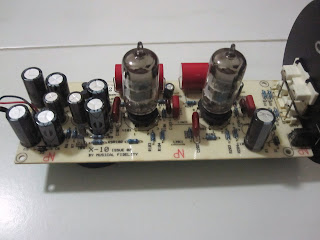 |
| Front |
 |
| Top view |
 |
| Back |
 |
| Internal |
An acquintaince informed these units are quite collectable nowadays and had regretted selling his unit many years ago.
There seems to be little information on the net on the IA-125. Basic information is about 40W RMS per channel, 10kg and was made to sound like a valve amplifier.
Update - 6Feb2012
Did not connect the unit to my speakers as had some doubt on the direction to turn the volume knob. Removing the top cover requires a hex key of sorts for 7 screws - I made do with a medium Torx screw driver.
Testing the volume pot connectors with a multi-meter reveals volume is zero when the dot on the knob points noon. Increase volume by turning clockwise.
Powering up the unit after connecting the CD player and speakers - you get the normal THUD, typical of Brit amps without any speaker protection - as per other famous Brits e.g Naim NAIT, early Exposure(s), etc.
This little amp has SPADES of drive and sounds great right after power-up!!! The IA-125 rewards when partner with high quality components. Reproduction is detailed, with clearity and the infamous British warmed.
Am still marvel-ing at how musical the unit can be!!!















































